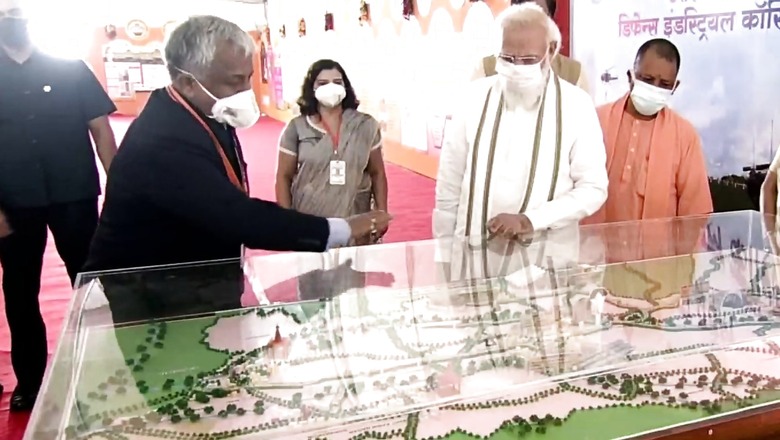
views
With the Uttar Pradesh assembly elections won comfortably, the Yogi Adityanath government is embarking on completion of its ambitious Defence Corridor Project for indigenous manufacturing of military goods and has started the process of development of four nodes of the plan after inaugurating one in Aligarh last year.
The Centre has decided to set up two Defence Industrial Corridors in the country— one in Tamil Nadu and the other in Uttar Pradesh. The UP one will have nodes in Agra, Aligarh, Jhansi, Chitrakoot, Lucknow and Kanpur.
Self-reliance
The ongoing Russia-Ukraine conflict has underlined the need for self-reliance in defence manufacturing for a country like India. Bids were invited by the UP government on March 11 for services to design the development of the nodes in Jhansi, Chitrakoot, Lucknow and Kanpur where the defence industries will come up. So far, the state has signed 74 MoUs worth investment of Rs 4,000 crore in the Defence Corridor and allotted 74 hectares of land to 22 companies in the Aligarh node with a confirmed investment of nearly Rs 1,250 crore.
On Tuesday, the Uttar Pradesh government also signed an extension of an MoU with IIT Kanpur and IIT BHU for the next three years to help it as knowledge partners for increasing investment in the Defence Corridor project. The foundation stone of the Brahmos Aerospace Unit for the next generation (Brahmos-NG) missile scheme has been laid in Lucknow and land has also been provided by UP to Bharat Dynamics Ltd in Jhansi for defence manufacturing units. The defence ministry and the UP government have coordinated on this.
Going forward
The six nodes for the project vary in size with Aligarh being the smallest, having an acquired area of 77 hectares, and Jhansi being the largest with an identified area of 1,000 hectares. As part of the first phase of development, basic infrastructure is being provided in each node, which includes boundary walls, roads, power supply and water supply. Infrastructure development work at the node in Aligarh is already underway while land procurement in Agra will be carried out as part of phase 2.
The government has now sought consultancy for these works in the Jhansi, Kanpur, Chitrakoot and Lucknow nodes along with comprehensive architectural advisers. The Kanpur node is spread over 203 hectares, the Jhansi node over 1,000 hectares, and Chitrakoot and Lucknow over 100 hectares apiece. The projects will be aligned with the National Smart Cities Mission as five out of the six identified nodes are under the Smart City Project and it is recommended that the planning also imbibe the features of the mission.
The development plan will also factor in the environmental impact as the corridor will have a wide spectrum of industries like aerospace, weapons, explosives, metals, alloys, CBRN, fire-safety equipment and electronics such as radars and sensors.
“As these are industrial bodies manufacturing products, they will generate a lot of industrial waste. Further, owing to the nature of the sector, these units will be generating waste materials that will be hazardous in nature. The environmental impact, therefore, will have to be factored in diligently and in close cooperation with all the stakeholders involved whilst formulating the plans,” says a document reviewed by News18.
Read all the Latest News India and Breaking News here




















Comments
0 comment